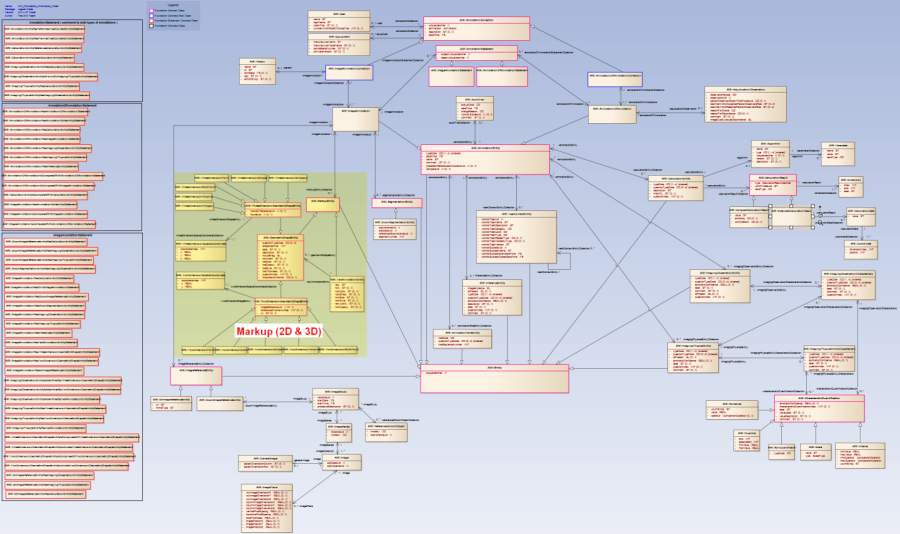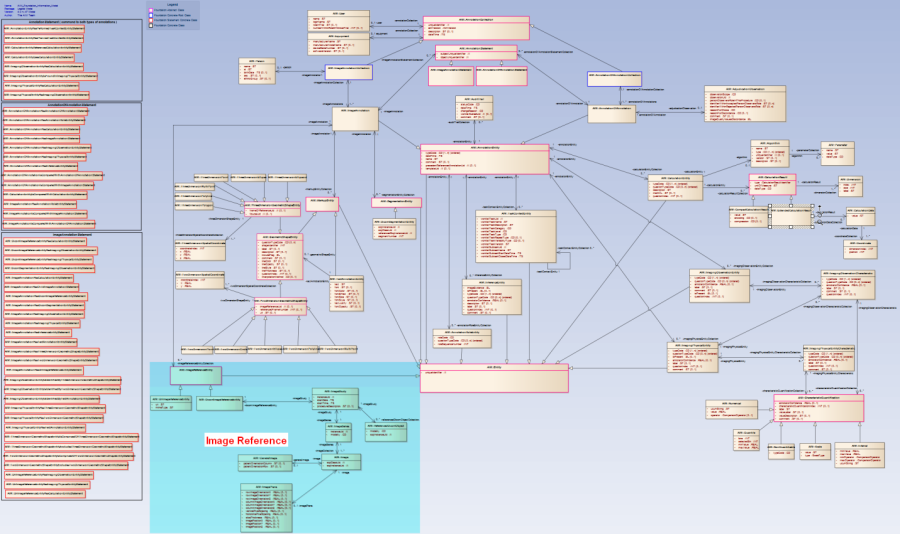 |
Page History
...
The TextAnnotationEntity class has coordinates captured as SCOORD or SCOORD3D graphic type as TwoDimensionMultiPoint or ThreeDimensionMultiPoint, respectively. A TextAnnotationEntity's MultiPoint implementation is expected to have no more than two coordinates that can be represented as an arrow connecting TextAnnotationEntity to a point on an image. Only the ImageAnnotation class can have markups.
Figure 8. Markup Group
The ImageReference group, as shown in Figure 9, represents an image or collection of images being annotated. The two possible types of references are DICOM and URI or web image reference. First, DICOMImageReferenceEntity associates with other classes that mimic the DICOM information model. It has one ImageStudy object that has one ImageSeries object, which in turn has one or more Image objects. The ImageStudy class has study instance UID, start date and start time, and procedure description. ImageStudy may have zero or more references to DICOM objects via the ReferencedDicomObject class. The ImageSeries class has series instance UID. The Image class has SOP class UID and SOP instance UID. The Image class has two associations with GeneralImage and ImagePlane; both classes came from the DICOM module general image and image plane, respectively. They are used to store frequently-used DICOM tags such as patient orientation, pixel spacing, and image position. The second image reference type is WebImageReference that contains a URI to an image.
Figure 9. ImageReference Group
...

